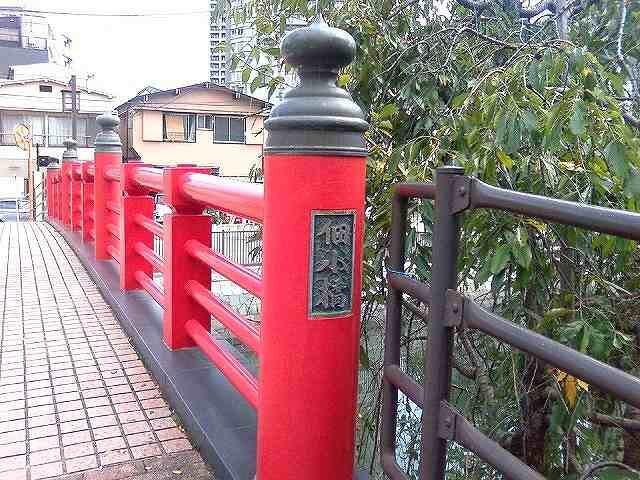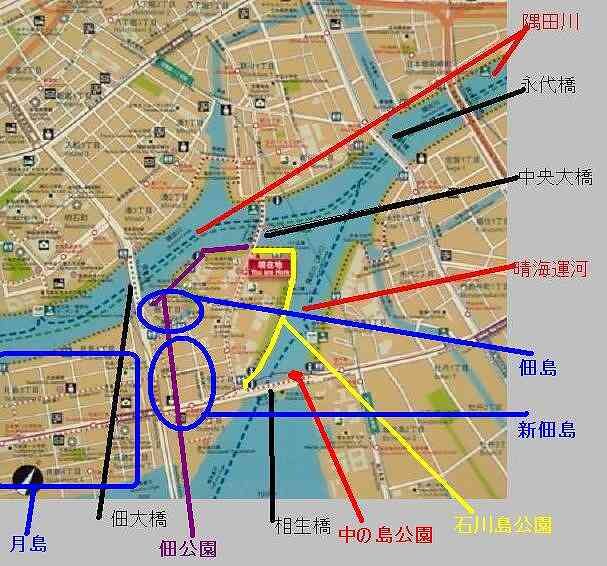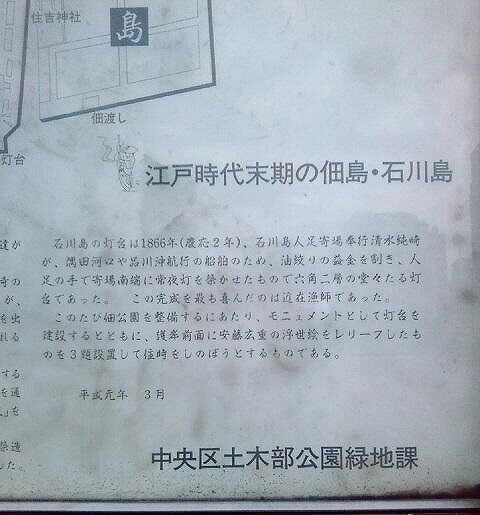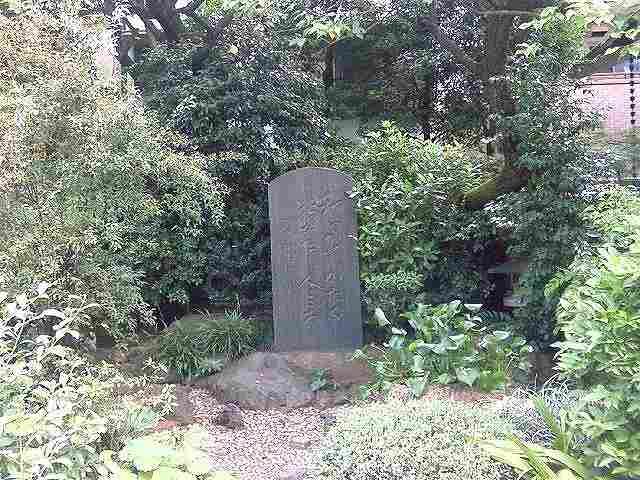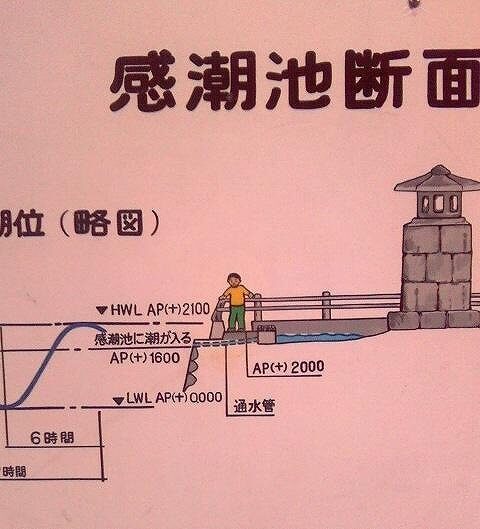Kaisuikan is a kappo ryokan built by Hanzo Tsuboi in the Meiji 30’s. At that time, the view was outstanding. The lodge and Ryokan is a Japanese-style two-story building, and the bath was boiling all day long.
The room which protruded toward the sea was able to enjoy fishing from the room, it is said.
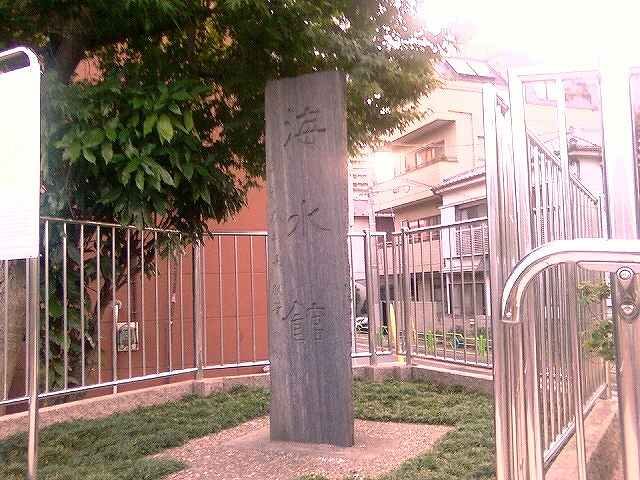
Monument of Kaisuikan built by the Toson Research Club at Meiji Gakuin University, the alma mater of Shimazaki Toson.
Many writers have used this Kaisuikan as a place to write since the end of the Meiji period. They include Toson Shimazaki’s autobiographical novel “Haru”, Kaoru Oyamauchi’s “Okawabata”, Isamu Yoshii’s “Poison Utsugi”, Rofu Miki’s “The Hunter with White Hands”, and others.
The monument is located at 3-11-19 Tsukuda, and Tsukishima station of Yurakucho line is the nearest station.

Explanation of the Kaisuikan Monument

Kaisuikan monument
Location: 31-11-19 Tsukuda, Chuo-ku, Tokyo
This area was part of the new Tsukuda Island reclamation site that was completed in 1896, and was a quiet scenic spot with a view of the mountains of Boso.
It was here that many cultural figures gathered from the end of the Meiji to the Taisho Era (1912-1926) to visit the Kaisuikan. The Kaisuikan was a kappo-ryokan and boarding house opened by Hanzo Tsuboi in 1905, and was built at 26 and 27 Shin Tsukudo-higashimachi 1-chome, Kyobashi-ku, Kyobashi Ward at that time.Toson Shimazaki stayed at Kaisuikan from 1907 to 1911 and wrote his autobiographical novel “Haru” (Spring) for the Asahi Shimbun, and Kaoru Osanai stayed there from 1907 to 1944 and wrote “Okawabata” for the Yomiuri Shimbun.
Other writers and artists who used the Yomiuri Shimbun include Kanso Arahata, Mokutaro Kinoshita, Satou Sounosuke, Takehisa Youmuji, Hinatsu Kounosuke, Rofu Miki, Kendo Yokoyama, Isamu Yoshii, and many others. Many writers and artists, including Rofu Miki, Kendo Yokoyama, and Isamu Yoshii, used the site for their creative activities.
This monument was erected in 1968 by the Toson Research Club at Meiji Gakuin University, Toson’s alma mater, and on the back of the monument is an inscription that describes the origin of the writing of “Haru”.
March 2009
Chuo City Board of Education

